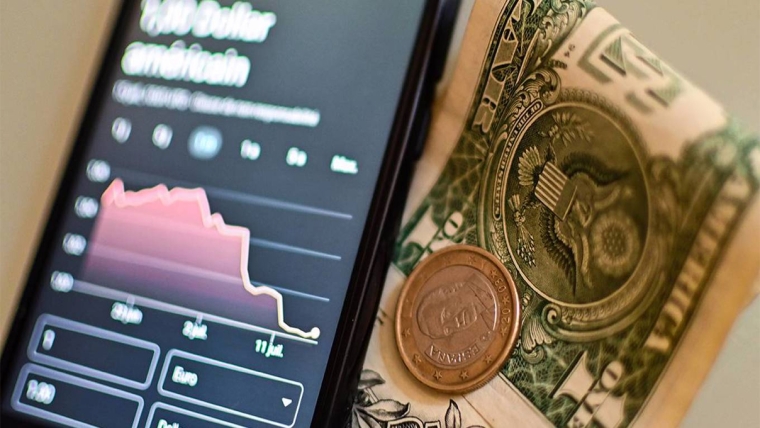
US inflation remained stubbornly high in August, with prices increasing at an annual rate of 8.3%. While this higher-than-expected increase has disappointed some economists, US Federal Reserve Chair Jerome Powell’s commitment to raising interest rates – which he emphasised in his recent Jackson Hole speech – will surely dent US inflation by squeezing demand. And the prospect of imminent monetary tightening has helped to strengthen the dollar, which has breached parity with the euro and reached a 20-year high against the yen, easing import-led inflation.
But today’s global inflationary surge is fueled by more than just domestic demand. Supply-chain disruptions related to China’s restrictive zero-COVID policy, the effects of the Russia-Ukraine war on food and fuel prices, and rising labour costs all play a part.
These supply-side factors largely fall outside of what the Fed can control. The US economy, however, is uniquely positioned to overcome this particular species of inflation, owing to its relative energy and food independence, abundance of immigrant labour, strong production capacity, and access to the capital needed to maintain and increase domestic manufacturing.
For example, the United States is less affected by soaring energy prices – a central driver of current inflation – because it is a net energy exporter. In 2021, US energy exports reached 25.2 quadrillion British thermal units (Btu), exceeding energy imports by about 3.8 quadrillion Btu. And in the first half of 2022, it exported more liquefied natural gas than any other country. Europe, by contrast, imported roughly 58% of the energy it consumed in 2020. In fact, all 27 members of the EU have been net importers of energy since 2013.
Even though American wages have increased markedly in recent months – unit labour costs jumped by 9.3% between the summer of 2021 and June 2022 – the US continues to attract and rely on immigrant labour flows, which tend to have a dampening effect on wage inflation, albeit with a lag. According to the Washington, DC-based Migration Policy Institute, 13.7% of the US population (or 44.9 million people) were foreign-born in 2019, compared to less than 10% during much of the second half of the twentieth century. Since 2005, more than one million people per year, on average, have obtained US permanent resident status.
Admittedly, there is some debate among academic economists about the extent to which higher immigration dampens wages. But a 2017 review of studies by the Cato Journal determined that, on average, a 10% increase in the number of immigrants is correlated with a 2% decrease in wages. Even if wages do not fall in the short term, higher immigration would likely increase the labour supply and reduce wage inflation over time.
Finally, the US accounts for 18% of the world’s manufacturing capacity, making it the world’s second-largest manufacturer, after China. Manufacturing accounts for $2.3 trillion of US GDP, employs 12 million people, and was recovering in the ten years before the pandemic. According to McKinsey, the US economy added 1.3 million manufacturing jobs between 2010 and 2019.
In the wake of the COVID-19 pandemic, global supply-chain disruptions have forced up import prices, as US households rely disproportionately on imported consumer goods. Due to these supply constraints, corporations will most likely continue to favour resilience over cost-cutting and diversification, meaning a pivot of manufacturing back to the US.
To be sure, reshoring could lead to a one-off increase in labour costs as employers bring jobs back to the higher-wage US economy. But over time, the US would be able to avoid the price vagaries of overreliance on foreign-based supply. Given that its strong domestic production capacity partly shields the US economy against more import-driven inflation, reshoring manufacturing will lead to less price volatility and, ultimately, lower inflation.
There are already signs that US inflation might be cooling. US import prices (which exclude tariffs) fell by 1.4% in July for the first time in seven months. Meanwhile, core inflation in goods and services (excluding food and energy) fell to 5.9% in July from a high of 6.5% in March, before rising again in August. While these price pressures are beyond the Fed’s control, the US has the tools to mitigate their impact.
That said, we cannot expect inflation to return to the Fed’s target of 2% anytime soon. But we can expect inflation to stabilise in the mid-single digits – an outlook that can give those allocating capital some degree of confidence in the US economy. In fact, from an investment perspective, it is hard to find another economy that can match what the US offers: ample natural resources, effective governance, a history of immigration, and a global reserve currency.
That is an ideal inflation-busting toolbox. By comparison, most other countries are far more dependent on the global economy. In today’s world, that leaves them more exposed to inflation.
Dambisa Moyo, an international economist, is the author of four New York Times bestselling books, including Edge of Chaos: Why Democracy Is Failing to Deliver Economic Growth – and How to Fix It. This content is © Project Syndicate, 2022, and is here with permission.
4 Comments
Ordinarily, I would agree with most of the above. Much of the article refers to the overt signs & results we see & read about, which still doesn't prove they are correct, but most of us have to take them at face value in the absence of the real data, often corrected later outside the headlines. However, it's the covert ones that interest me, the obvious one being politics in America. This has the potential to become a shambles. The old term for shambles referred to the space in the markets where you would get your protein 'prepared' (slaughtered) before taking it home. With little or refrigeration in those times it was a very common sight. And I can see the potential for such a description in the upcoming mid-terms this November, and again in the presidential elections in 2024. Some states have been a bit shonky on their voting for years. Even Florida was called out back in Al Gore's day, & it is not hard to find articles on this topic if you go looking. The big union driven 'bus-abouts' were/are legendary in their audacity & the fact that their are many voting systems (mostly different software) spread across the 50 states does not instil much confidence in it to begin with. If America cannot (be seen to) get this right & prove to everyone that it is so, then we might have all the makings of a modern day shambles.
Forgive my scepticism, but these appear to be the same arguments that were pitched in support of ‘inflation is transitory’
I'll believe it when I see consecutive quarters of downward inflation movement. Don't tell me inflation will be lower, show me it is getting lower.
America is what it is today because of immigrants and immigrants are a huge benefit to the economy.
It's interesting that many uneducated Americans ( the minority by a small margin) bitch and moan about inflation and immigration in the same sentence ( I wont even get into the discussion of how America was built completely through Immigration) This is usually the uneducated trumpers who have no clue how the economy works, including the dumbest of them all being trump himself. That is, immigrants might suppress wages, but that in turn suppresses inflation because the cost of labor effects prices of everything. You cant have it both ways. No immigrants means huge amount of jobs not filled because 'white' Americans think themselves beneath them to do the many jobs immigrants do, even the extremely stupid and unskilled ones who tend to be the most racist for some reason, which are mostly unemployable, but they need someone to blame for their own laziness. No immigrants means wages would go up but many businesses would simply close their doors from lack of 'employable' 'Americans'. And then the same people would bitch and moan about more inflation and not being able to get their Spiced Chai Latte in under 60 seconds or under $5.
Whether you agree with the reasoning for his policy or not, the dumbster started this inflationary cycle when he started the trade war with China back in 2019. You think inflation wasn't going to go up as a Chinese goods became more expensive due to the dumbster imposed tariffs? Go anywhere in your home and try and find 2 out of 10 items that are not made in China.
The misinformation and outright lies spewed forth by the likes of the foreign owned fox entertainment etc that is lapped up by the pathetic dumbster sheep followers is what has made America laughable among intelligent people. The likes of them contribute hugely to the influence of the uneducated and do, and will, cause problems going forward in America, all based on lies and the need for power and money.

We welcome your comments below. If you are not already registered, please register to comment
Remember we welcome robust, respectful and insightful debate. We don't welcome abusive or defamatory comments and will de-register those repeatedly making such comments. Our current comment policy is here.